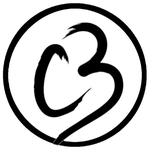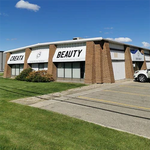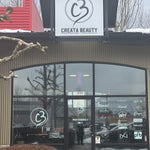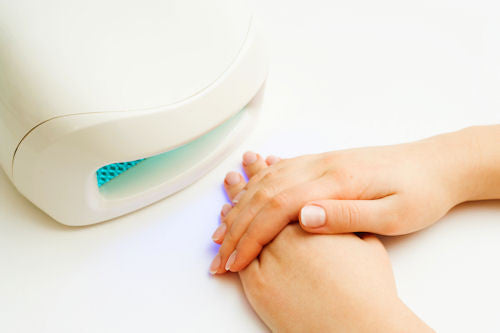Three Experts Rebut Claims that UV Nail Lamps are Unsafe for Skin
Doug Schoon, M.S. Chemistry, Chief Scientific Advisor, CND; Paul Bryson, Ph.D. Chemistry, Director of R&D, OPI Products; Jim McConnell, BA Chemistry, President, McConnell Labs
A recent report incorrectly claimed that UV nail lamps are a source of "high-dose UV-A" and also inaccurately compared UV tanning beds with UV nail lamps. The report, "
Occurrence of Nonmelanoma Skin Cancers on the Hands After UV Nail Light Exposure" (MacFarlane and Alonso) 1 , overestimated the exposure of client skin to UV light emitted from UV nail lamps and improperly characterized the effect of these lamps on the hand.
As three of the leading scientists in the professional nail industry, we were surprised by these claims. To verify the facts, using an independent laboratory we tested the leading UV nail lamps to determine how much UV-A and UV-B they emit and then compared that to natural sunlight.
TestingIn preparation for our study, we tested many UV nail lamps to determine which had the highest UV output and, as expected, found the nail lamp with the highest output was one designed to utilize four 9-watt UV bulbs. We also decided to test a popular UV nail lamp designed to utilize two 9-watt UV bulbs. The purpose for testing both lamps was to determine how exposures vary across the range of UV nail lamps with the goal of providing information that would apply to the majority of salons and situations. The selected two bulb UV nail lamp was chosen and tested because it is a popular brand and representative of other UV nail lamps within the two 9-watt UV bulb category. The selected four 9-watt UV bulb nail lamp was chosen because it had the highest measured UV output of any UV nail lamp tested. No attempt was made to test UV nail lamps utilizing only one UV bulb, since the overwhelming majority of UV nail lamps use two, three or four UV bulbs. The UV nail lamps selected for testing are likely representative of more than 90% of the UV nail lamps used in salons.
Lighting Science, Inc., of Phoenix, AZ., is a fully equipped, completely independent scientific testing laboratory that specializes in the development and testing of many types of illumination devices, including those that emit UV light and Lighting Science is not in the business of
manufacturing or selling UV nail lamps. The two selected UV nail lamps were submitted to
Lighting Science in brand-new condition. Highly sensitive UV detectors were placed where client hands would normally reside while inside a UV nail lamp. These detectors accurately measured the amount of UV-A and UV-B light emitted from each UV nail lamp. To ensure a proper comparison, Lighting Science also used the same test equipment to measure the UV-A and UV-B light found in natural sunlight. A discussion of these measurements and results is presented below.
Discussion
The MacFarlane and Alonso report made several errors and misstatements concerning artificial nails products and how they are applied. The most notable involves the improper estimation of UV exposure to the skin by UV nail lamps, resulting in a faulty report conclusion. It is incorrect to conclude that putting a hand into a tanning bed with twelve 100-watt UV bulbs is the same as putting that hand into a UV nail lamp with four 9-watt bulbs because: 1) tanning bed users typically use these devices more often and for much longer periods than seen with nail salon services, 2) the authors mistakenly assumed that UV bulb "wattage" is a measure of UV exposure to the skin, when wattage is actually a measure of energy usage, 3) the authors erred significantly by relying solely on UV bulb wattage to estimate the actual amount of UV exposure to skin, and 4) they neglected to consider that UV light reflects many times inside the tanning bed and these internal reflections further increase UV exposure to skin, again demonstrating that MacFarlane and Alonso approach to estimating UV exposure to skin is not valid. Their comparisons to UV tanning beds simply doesn't make sense logically or scientifically.
The UV testing performed by Lighting Science used proper scientific techniques and equipment to measure both UV-A and UV-B radiation in terms of milliwatts per centimeter squared (mW/cm2), which is a measure of how much UV light falls upon each and every square centimeter of skin (about 1/8 square inch). It is important to understand that UV-B is considered by many to be more potentially damaging to skin than UV-A, which is why nail lamps rely on special UV bulbs that contain internal coatings designed to filter out most of the UV-B light.
It is important to note that clients visit a salon for UV gel nail application or maintenance twice each month and that each of their hands are placed into the UV lamp for intervals of two minute or less, for a total of 6-10 minutes. In this report, we will always assume the highest level of exposure: 10 minutes per hand, twice per month.
ResultsTesting by Lighting Sciences produced the following information:
- UV-B output for both UV nail lamps was less than what was found in natural sunlight.The bulbs used in UV nail lamps contain special internal filters which remove almost all UV-B, so this result is not surprising. The test results show that the amount of UV-B to which client skin is exposed is equal to what they could expect from spending an extra 17 to 26 seconds in sunlight each day of the two weeks between nail salon appointments.
- UV-A exposure is much lower than suggested by MacFarlane and Alonso.Test results show that UV-A exposure for client skin is equivalent to spending an extra 1.5 to 2.7 minutes in sunlight each day between salon visits, depending on the type of UV nail lamp used. A nail lamp with two UV bulbs corresponds to 1.5 minutes and a nail lamp with four UV bulbs corresponds to about 2.7 minutes each day between salon visits.MacFarlane and Alonso claimed to find two cases of skin cancer that they suggest were caused by UV nail lamps. Both of their patients live in Texas, a climate where significant incidental UV exposure from sunlight is inevitable even in the absence of deliberate recreational exposure. One patient had been exposed to a UV nail lamp only eight times during the same year (we assume every two weeks for 4 months). During this same period, the patient would have been exposed to more UV-A and UV-B simply by spending 10 to 20 minutes eating her lunch outdoors in natural sunlight once per week.Oddly, the authors described this patient as a 48-year-old white woman who claimed to have "moderate recreational UV exposure". We fail to understand how, under the circumstances, it could be concluded that this case of nonmelanoma skin cancer is caused by these eight exposures to a UV nail lamp, especially in light of the low levels of UV exposure expected during these few visits to a salon. We respectfully disagree and believe the results of Light Science’s independent testing are in agreement with our own laboratory findings supporting the safety of UV nail lamps.
- McFarlane and Alonso's report has a faulty conclusion because it is based on incorrect assumptions.
- Our testing shows that UV nail lamps emit relatively low levels of UV light and these exposure levels are considered well within safe levels when they are used to perform UV artificial nail services in nail salons.
Unfortunately, inaccurate information can have a long-term damaging effect, even when later disproved. Already, some are unfairly distorting the risks of cancer on Internet blogs, YouTube and other media outlets, even to the extent of offering the exceptionally unwise advice of forgoing the UV curing of products that will not cure otherwise. We believe a fair examination of the facts supports the conclusion that UV nail lamps are safe when used as directed and brief client exposures are as safe as brief exposures to natural sunlight. Client hands are likely to be exposed to more UV light while driving their cars than they will receive from UV gel nail services.
Nail UV lamps are safe when used as directed. Nevertheless, we recognize the Nail Technician's need to address client concerns. For those clients who express anxiety, a Nail Technician can consider doing the following to make the service more reassuring:
- Place a small piece of white cloth over the hands when placing them in the UV nail lamp.
- If a client insists on wearing sunscreen, they should still be asked to wash their hands before any salon service begins. In this case, the Nail Technician should take special care to ensure nail plates are properly cleansed and dehydrated in order to prevent service breakdown (e.g. product lifting, discoloration or mottling) from the film sunscreen products can leave behind. Also, it is crucial to keep sunscreen lotions and sprays away from implements and supplies used during the nail service to avoid contamination.
- Occurrence of Nonmelanoma Skin Cancers on the Hands After UV Nail Light Exposure, MacFarlane, D.F., Alonso, C.A., Arch Dermatol. 2009;145(4):447-449
______________________
Author's Biographies:
Doug Schoon, M.S. Chemistry, UC Irvine, is an internationally known scientist and lecturer with 20 years experience as a scientific researcher in the professional nail industry and has many years experience developing UV cure nail products. Schoon is author of Nail Structure and Product Chemistry, 1st & 2nd editions, many dozens of trade magazine articles and chapters in the textbook Milady's Standard Nail Technology, as well as chapters on cosmetics in a variety of different reference books for Dermatologists.
Paul Bryson, Ph.D. Chemistry, U.S.C., Director of Research and Development of OPI Products Inc. for the past 12 years. His experience includes formulating both UV cured and 2-component acrylic systems for nail cosmetics, dental restorations, and electronic-part fabrication. He is a regular contributor to trade magazines, has written a chapter on nail cosmetics for a medical dermatology text, and has advised the California Board of Barbering and Cosmetology on improving salon safety regulations.
Jim McConnell, B.A. Chemistry, University of Oregon, President of McConnell Labs, manufacturers of Light Elegance Nail Products. A formulating chemist of UV cured systems for 12 years in the beauty industry. Jim is a contributing author for Milady’s Standard Nail Technology as well as articles in many manicuring trade magazines. Media Inquiries: Doug Schoon, DSchoon@SchoonScientific.com





